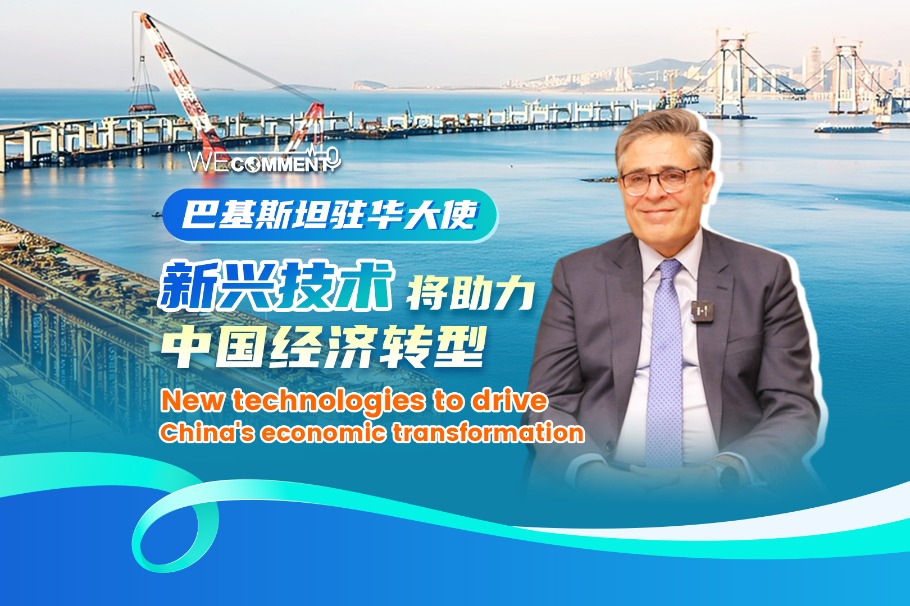Tale of two cities

Chongqing, Chengdu can build on historic links to 'grow together'
Comparisons between Chengdu and Chongqing are inevitable and seemingly endless.
Both are large Chinese cities and major economies in Southwest China. They are famous for their spicy food and hot pot dishes. In fact, Chongqing was previously part of Sichuan province, of which Chengdu is its capital.
But the two cities are also very different. Chengdu, which is a two-hour drive from Chongqing, is flat and undulating. But Chongqing, now a municipality under the central government, sits amid mountains, intersected by the Jialing and Yangtze rivers. Cycling in hilly Chongqing is virtually impossible.
Chengdu's geographical advantages have also kept its economy ahead in the region and nurtured a relaxed way of life. The provincial capital is known as a city of leisure and boasts an unusually large number of parks, museums and temples.
"In Chengdu, you can find people playing mahjong or cards on the side of a road anytime. But in Chongqing, you seldom see people doing these things," says Michael Settelen, who is from Switzerland and has lived in both cities.
Chongqing is fast-paced not only in its way of life, but also in its development. Since it separated from Sichuan in 1997 and became the only municipality in western China, the city's economy has been growing at high speed.
The GDP per capital in Chongqing had reached $4,000 (2,942 euros) by the end of 2010, compared with $1,000 by the end of 2005.
Gary Hynson, a wine businessman from the United States, says Chongqing is developing at a higher speed than Chengdu right now. "You can hear construction in Chongqing everywhere. But you don't hear that much in Chengdu," says Hynson, whose company is based in Chongqing.
"Chengdu is more well-developed. But Chongqing is developing much faster and opportunities are everywhere," he says.
With the emergence of Chongqing's economy, the competition between the two cities is getting fiercer. Both of them have a large population pool to draw from, both have advantages to offer in terms of cheaper operation costs for companies than that of coastal cities, and both have the ambition to establish themselves as the leading economy in western China.
The two local governments have even made similar plans for the development of their cities. Both want to become the financial center in the west and develop the high-tech manufacturing industry.
When it comes to investors, the tension between the two governments is also getting stronger. Chongqing has sealed the deal with leading PC producers Hewlett-Packard and Acer, while Chengdu has brought in their rivals Dell and Lenovo.
Since Chongqing's Liangjiang New Area was ratified by the central government in 2010, becoming the third of its kind after Shanghai Pudong and Tianjin Binhai, Chengdu has been working very hard to get the same treatment for its New Tianfu City, which is touted as the provincial capital's new economic powerhouse.
But analysts say that, as the two major economies in western China, cooperation between Chongqing and Chengdu can bring the economic development of neighboring cities and districts to the next level.
The central government recently ratified the Chengyu Economic Zone project, which covers 15 cities in Sichuan and 31 districts and towns in Chongqing.
Li Yong, director of the regional economic research department with the Chongqing Academy of Social Science, says the long-term competition between Chengdu and Chongqing has left no room or opportunities for the development of neighboring cities.
"But with the founding of the zone, many cities will benefit from their development. For example, some raw material suppliers may start factories in areas between the two cities," Li says.
An express railway that started in March 2010 also aims to bring Chengdu and Chongqing as well as the cities between them closer.
"Hopefully, it'll boost cooperation and speed up development in western China," Li says.
Hu Haiyan contributed to this story.
Today's Top News
- HK unveils sweeping steps after huge blaze
- China releases white paper on arms control
- China blasts new remarks by Japan's prime minister on Taiwan's legal status
- Investment grows as firms make tech shift
- Lessons of HK fire tragedy must be learned: China Daily editorial
- China releases white paper on arms control in new era






























